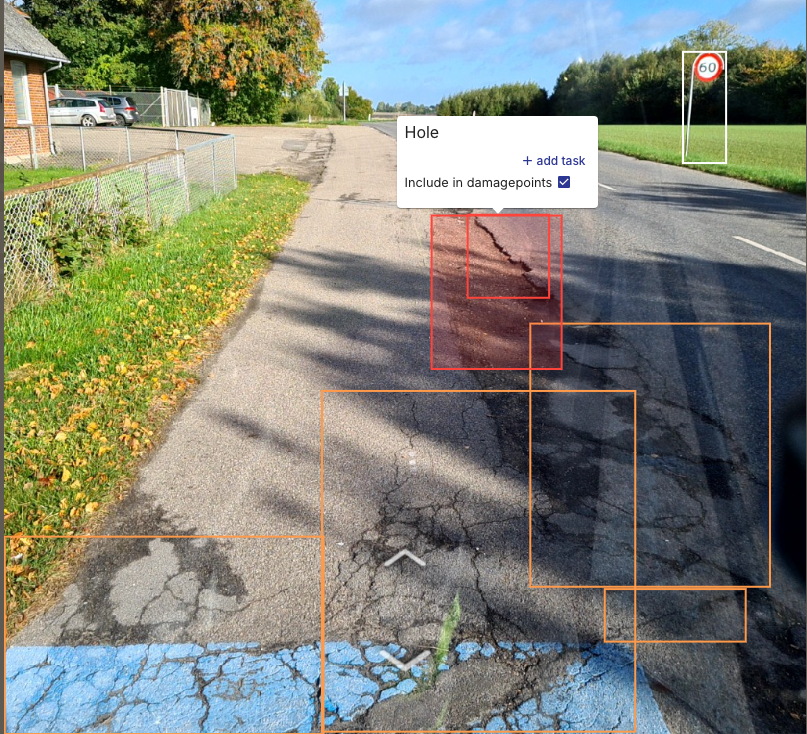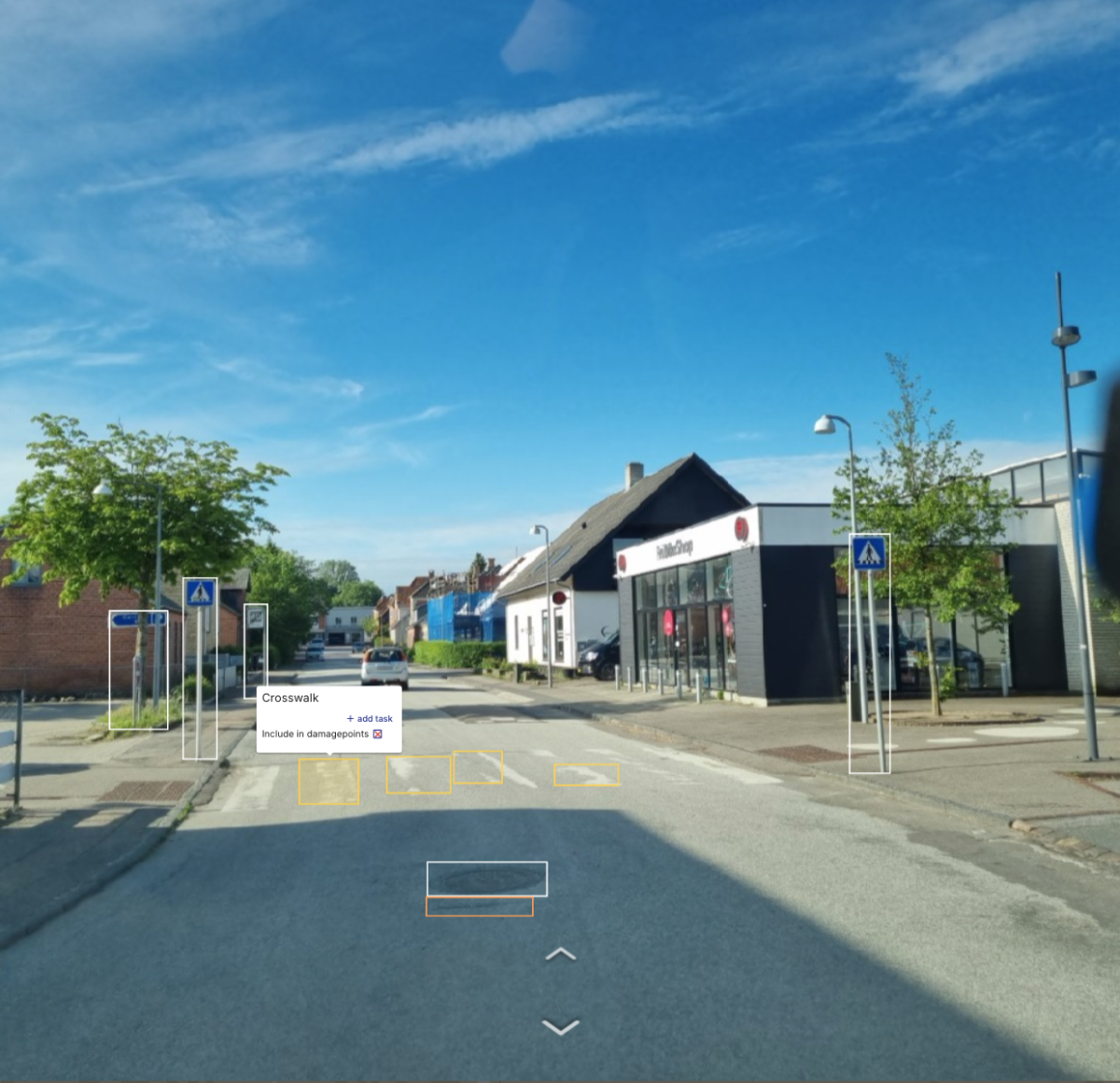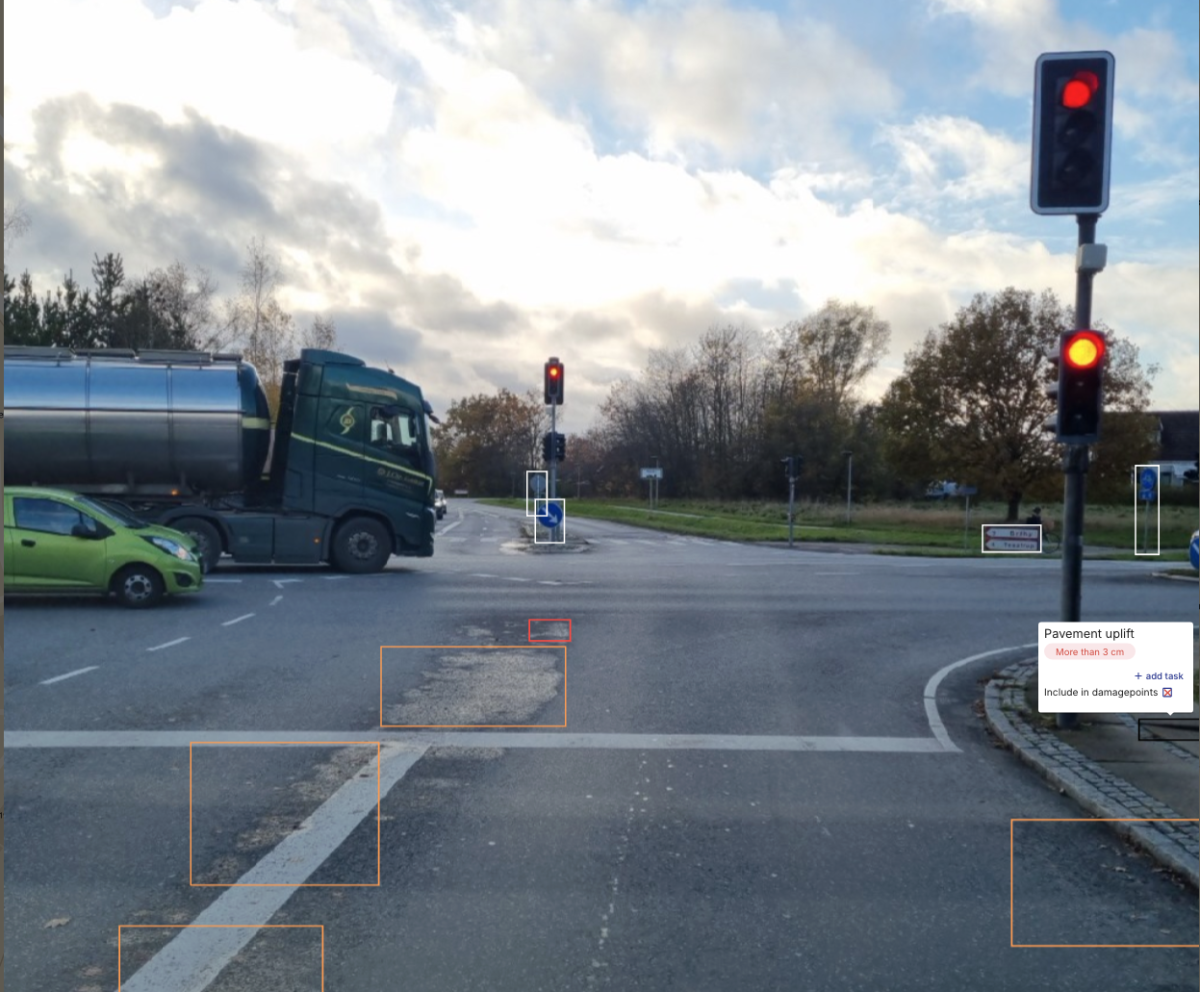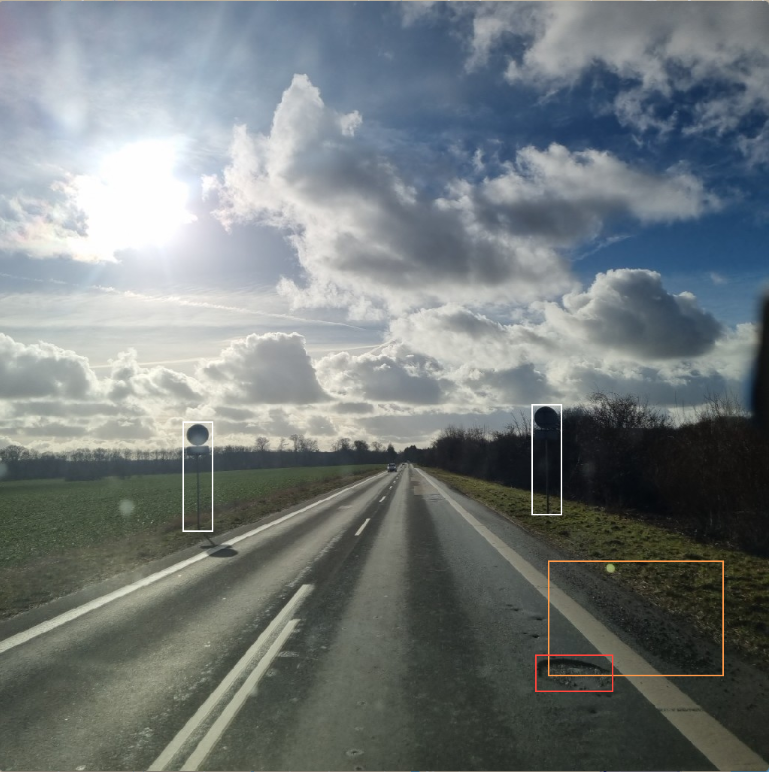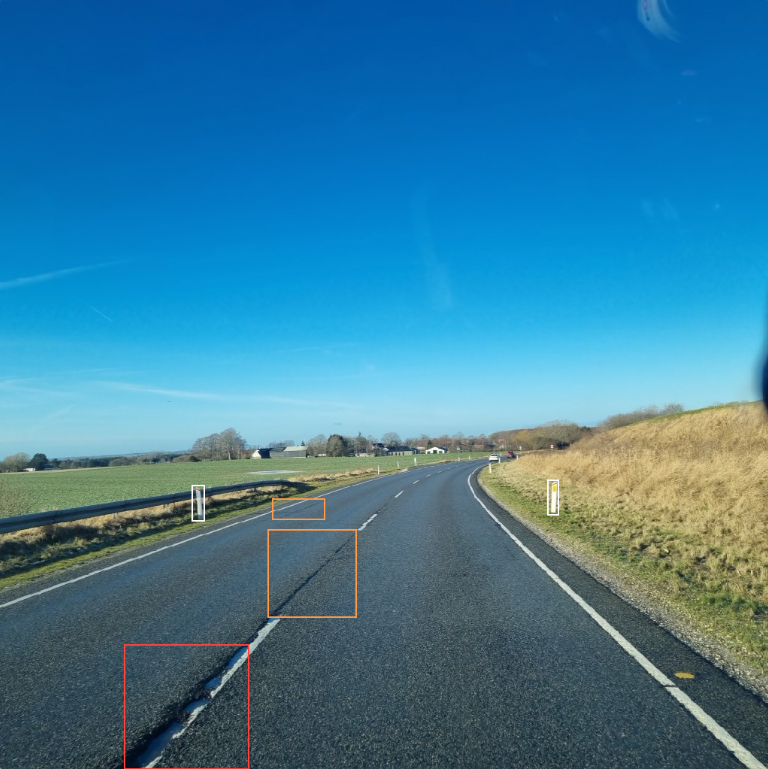Initiative details
We’re addressing multiple road safety problems:`
- Improving the work safety of road inspectors by reducing time being physically in the middle of the road and reducing multitasking while driving.
- Improving road safety for cars, motorcycles and bicyclist by reducing potholes and defect road inventory such as faded road signs, damaged bollards, etc.
- Improving road safety for pedestrians by mapping crosswalks with worn-out lane markings as well as pavement uplift that causes people to fall.
Image examples can be found attached
- Improving the work safety of road inspectors by reducing time being physically in the middle of the road and reducing multitasking while driving.
- Improving road safety for cars, motorcycles and bicyclist by reducing potholes and defect road inventory such as faded road signs, damaged bollards, etc.
- Improving road safety for pedestrians by mapping crosswalks with worn-out lane markings as well as pavement uplift that causes people to fall.
Image examples can be found attached
Initiative date
to
Who was/is your target audience?
Policy makers
Public authorities
Children 0-16
Young adults 17-25
Adults
Parents
Seniors
Company employees
Fleet operators
Car drivers
Car drivers – professional
Educational staff
Emergency services
Public transport
Van drivers
Lorry/truck drivers
Cyclists
Micromobility riders
Powered two wheeler riders (excluding micromobility)
Pedestrians
Others
Topic
Improve vehicles and infrastructure
Organisation details
Faxe Kommune
Local Public authority
Denmark
Faxe Kommune/Region Sjælland
Contact name
Jørgen Veisig
Telephone number
23703834
jvei@faxekommune.dk
Website link
Project activities
If you work together with external partners, list the most important partners and briefly describe their role.
We’ve collaborated with the company Pluto Technologies which has provided us with the necessary equipment to conduct road inspections with AI. We've been using the solution since its start and have been part of shaping the features. The ability to share our team's feedback and needs has made it possible to tailor the solution for our municipality and help manage expectations for other external partners such as our partner organizations within the public sector.
Please describe the project activities you carried/are carrying out and the time period over which these were implemented.
We’ve implemented automatic road safety inspections with AI of our municipal road network. Before this task was conducted manually, which in some cases was dangerous for our employees as they had to multi-task by both driving and looking for road hazards at the same time. Further, the manual registrations were also an unsafe working practice for our employees as they had to take pictures in the middle of the road. Today, we have computers to conduct the registrations, which give the workers safer working conditions and also a more comprehensive registration including more than 60 categories and conditions. With a full overview of potential road safety hazards and a continuous list to prioritize tasks. The ability to filter for the most relevant and urgent damages makes it easy for our municipality to attend to important road hazards much faster and be more proactive in our preventive measures.
In terms of implementation, what worked well and what challenges did you need to overcome?
The system has been easy to implement (see video). The important process has been getting employees familiar with it to utilize the automatic registrations in the best way possible. We initially expected there to be challenges with understanding the new technology and incorporating it into the daily operations, as any new tools can be seen as more of a burden than something to help with efficiency but the case has been very positive with Pluto, as it does reduce the manual work for our team. Furthermore, what has worked well is that we're now able to focus on actually improving the infrastructure and can rely on the inspections and planning to be of higher transparency and precision than with the previous methods.
Evaluation
Please summarise how you have evaluated the initiative’s impact (e.g. social media reach, survey, feedback forms, statistics).
We've received positive feedback from our employees who now spend 50% less time on road safety inspections and have gotten a safer work environment. From a coordination and data perspective, our information was incomplete and based on pen and paper. With our AI inspections we have a complete overview, and regarding road safety some of the key metrics include the number of detections of road hazards so we can prioritize, but also the user-friendliness of the solution such that it can be used across our workers. The latter is more difficult to measure, and is more subjectively assessed.
What has been the effect of the activities?
We've been able to repair and attend to urgent road hazards significantly faster. Over the past 12 months, our AI inspections identified 1.569 holes in our road network, and we were able to allocate resources to the most critical roads based on traffic level and type. 24 of the holes were identified on bicycle lanes and 166 on our roads with the highest speed limit. Further, we also got data on the condition of our road inventory such as faded road signs and damaged bollards that are important for overall road safety. Having a comprehensive overview not only allows us to act faster and smarter but also provides us with important data for politicians such that there is objective argumentation and historical data related to our infrastructure. Examples of the registrations are attached to the application.
Please briefly explain why your initiative is a good example of improving road safety.
Research has shown a correlation between road accidents and road conditions. In particular, cyclists and motorcyclists are impacted by potholes and other types of hazards. As roads are continuously exposed to wear and tear and resources are limited, it's important to have an overview of where to focus. It's also important to make the work conditions of road inspectors safer as they can be very exposed when taking "manual registrations" in the middle of the road. We've found the technology easy to implement and therefore have advocated to other road agencies.
How have you shared information about your project and its results?
This year, we were invited to the meeting of directors of all municipalities in Denmark and delivered a presentation about our project. It was well received, and we're honoured to be a positive example and share our experience with other local authorities willing to implement similar solutions.
Supporting materials
